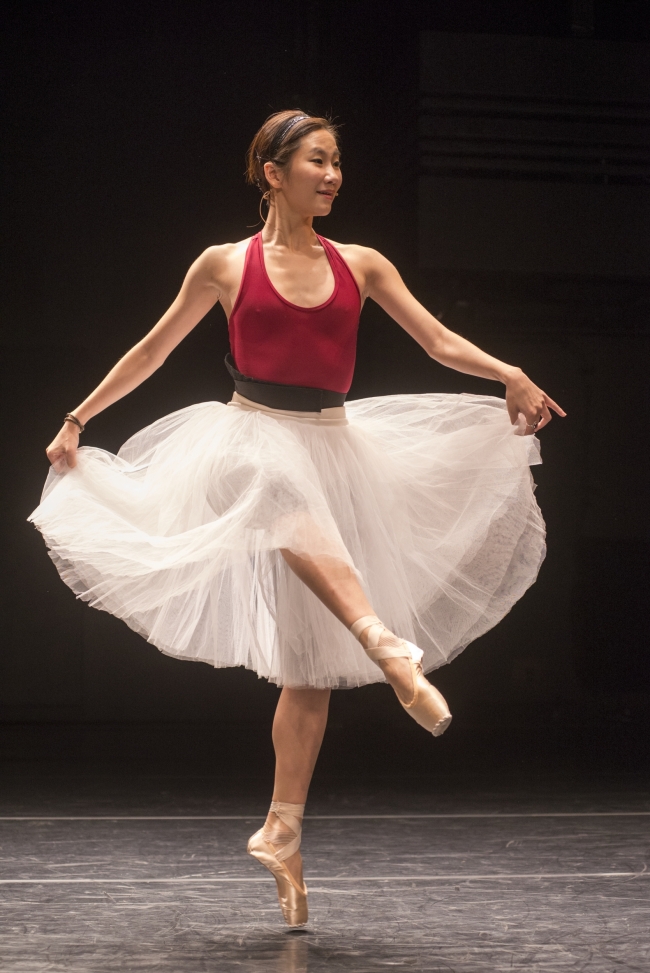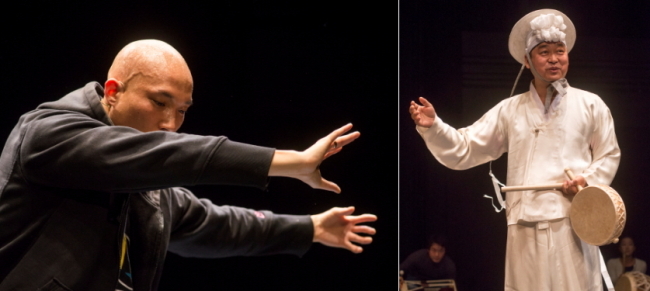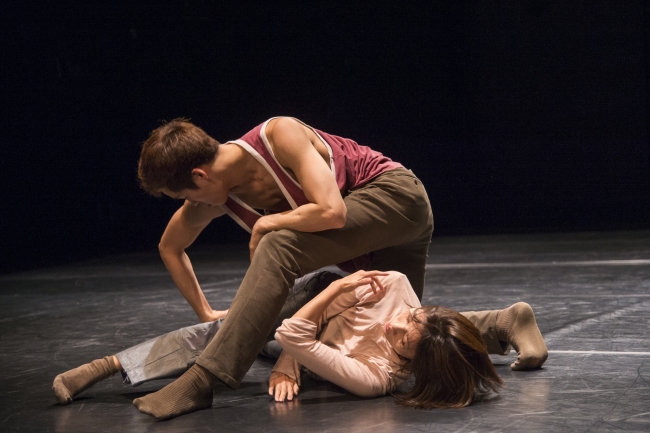 |
Kim Ji-young (KNCDC) |
Dancers rarely get to speak on stage, and there is a reason for it. It’s not impossible, but it’s difficult.
Celebrated ballerina Kim Ji-young on Tuesday breathed heavily at the Jayu Theater of Seoul Arts Center, after performing a one-minute scene from the popular romantic ballet “Giselle.” She couldn’t speak for more than 10 seconds, as she could barely catch her breath.
“There is a reason why ballets don’t have any lines,” she said. “I pretty much didn’t breathe at all for the past minute.” As she spoke, her labored breathing filled the venue through the microphone attached to her face and back.
It’s the sound most dance fans don’t get to hear while watching a performance. Dancers usually look effortless on stage, and many are tricked into believing that they are. The Korea National Dance Company’s ongoing project, “Cross Cut,” is the kind of performance that breaks that illusion.
In this show, a total of seven dancers reveal their vulnerable and personal sides: They dance while talking and breathing heavily ― with a microphone attached to their bodies ― about how hard it is to pull off their technique when they can barely catch their breath, how difficult it is to fight against prejudice, and how being a dancer is “almost like a being a military officer.” The result is a heartfelt, humanizing and often hilarious experience, that lets the audience see the dancers as flawed but trying individuals.
 |
(from left) Ahn Ji-seok, Kim Un-tae |
The project features dancers of different genres, including ballerina Kim, ballerina Kim Joo-won, contemporary dancers Lee Na-hyun and Lee Seon-tae, street dancers Differ and Ahn Ji-seok, and traditional Korean dancer Kim Un-tae.
Each dancer has a unique story to tell. While Lee Seon-tae shares his frustration over the competition-oriented dance education in Korea, street dancer Ahn Ji-seok, along with his rather poetic movements, shares his thoughts about the similarities and differences between dance and Asian martial arts.
One of the most memorable performances was the one by contemporary dancer and choreographer Lee Na-hyun, whose works pay special attention to the deconstruction of and liberation from the body. Her dance, which started from simply walking in circle on stage, transformed into a piece consisting of extremely unusual movements that almost reminded one of the body of the disabled.
 |
Lee Seon-tae (top), Lee Na-hyun (KNCDC) |
“The way we walk is taught by others. We are trained to walk the way we do,” she says while slowly showing her movements. “And then I challenge the way we do it. What about I always keep one of my legs straight when I walk? Or I move my right joint differently?” The shapes she created by carefully contorting her body were strangely poignant while mildly disturbing.
“Cross Cut” successfully gives an opportunity for the dancers to be who they are on stage, on top of being the dancers that they have been, while allowing the audience to empathize with the lives of others ― and understand what it really means to only use one’s body as a means of communication and expression.
“Cross Cut” runs until Sunday at Seoul Arts Center in Seocho-dong, Seoul. Tickets range from 20,000 won to 30,000 won. For more information, call (02) 3472-1421.
By Claire Lee (
dyc@heraldcorp.com)










